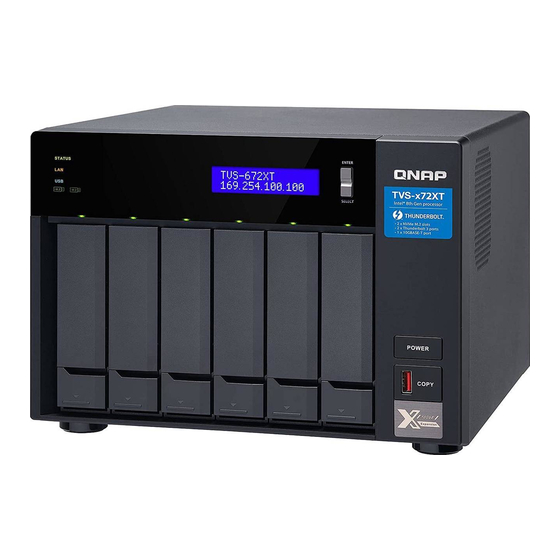
QNAP TVS-672XT User Manual
Hide thumbs
Also See for TVS-672XT:
- User manual (61 pages) ,
- User manual (63 pages) ,
- Repair manual (175 pages)
Table of Contents
Advertisement
Quick Links
Advertisement
Table of Contents















Need help?
Do you have a question about the TVS-672XT and is the answer not in the manual?
Questions and answers